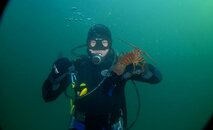Why is a Rescue Instructor an authority on that statistic? While I'm not either, I have had on two seperate occasions had to donate to an OOA diver. On one occassion, they grabbed for the reg in my mouth. In my experience, that makes it 50/50, and just cause to believe it is a normal reaction.
How is a cave any different than a wreck? And, in reality, see response above, having a long hose still gives you the ability to keep in contact with the diver. But, it also allows that seperation when the situation is under control. You don't have that ability with a 40" hose. Also, why change up your configuration just because you aren't diving in an overhead environment? While the long hose configuration was established to provide efficiency in tight spaces, it has been adopted by multiple training agencies as a standard configuration no matter what dive environment one dives in. How is a long hose a pain?




